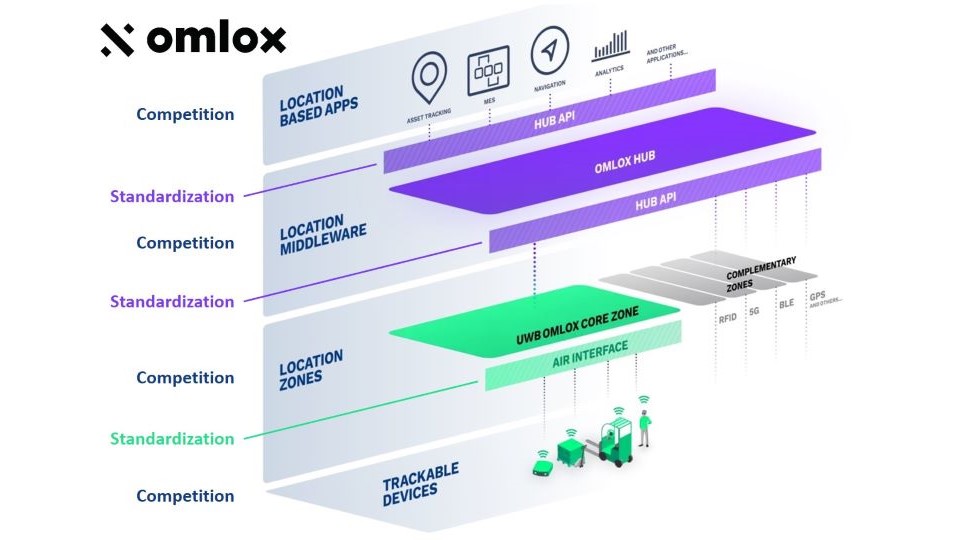The logistics and manufacturing industries have long been the backbone of global trade and economic growth. However, these sectors are currently facing a significant challenge: a shortage of skilled workers. The scarcity of qualified personnel in roles ranging from machine operators, warehouse workers to supply chain managers has the potential to disrupt operations and hinder industry growth. One innovative solution that holds promise in addressing this issue is the strategic utilization of location data by means of the open locating standard omlox.
Understanding the Skilled Worker Shortage
The shortage of skilled workers in logistics and manufacturing has multiple causes. As experienced workers retire, there often aren’t enough young professionals with the necessary training to replace them. Additionally, the rapid advancement of technology has led to an evolution in job roles, requiring new skills that many existing workers may not possess. This discrepancy between skills needed and skills available can disrupt the smooth functioning of these industries. Furthermore, young professionals, demand modern digital environment and tools in their working environment, paired with a demand for flexible working times and environments.
Leveraging Location Data
Location data, collected through various technologies such as GNSS, RTLS, AutoID can also help to streamline automated processes and allow for the digital tools like handhelds, wearables, or robots in warehouses and on shopfloors.
- Finding instead of searching: Even today a great proportion of the daily routine of workers in manufacturing and logistics is the searching of equipment, assets, or material. Using locating technologies can reduce this search times significantly, resulting in a higher productivity – of worker and equipment.
- Automation: By using (real-time) location data, companies can streamline process and reduce repetitive manual tasks like checking shipment lists, reporting tasks in digital systems, or having material automatically transported by AGVs or AMRs.
- Remote operation and maintenance: Knowing where things are, also helps in allowing for a remote operation and maintenance in a sense of having e.g., remotely operated forklifts or trucks and allows for a remote maintenance of machinery, equipment or even infrastructure e.g., using drones and robots.
- Digital tools: In today’s competitive job-market, applicants clearly demand a modern digital working environment. Using location-based processes allows (or even demand) the usage of mobile devices (like tablets, scanners), wearables (like scanning gloves) or even AR-glasses to allow for an handsfree operation.
Location provides valuable insights into workforce dynamics, supply chain efficiency, and resource utilization. By harnessing this data, companies can make informed decisions to mitigate the skilled worker shortage.
- Optimized Workforce Deployment: Location data can help companies identify areas with a surplus of skilled workers and allocate their resources accordingly. This is particularly important for large-scale manufacturing plants and distribution centers. Real-time location tracking can facilitate flexible workforce deployment, ensuring that tasks are efficiently handled even in areas facing labor or skill shortage.
- Enhanced Resource Management: Efficient supply chain management relies on skilled personnel to coordinate and optimize operations. By using location data to monitor the movement of goods, inventory levels, and transportation routes, companies can streamline processes and maximize resource utilization, thus mitigating the impact of worker shortages.
omlox
omlox is a technology standard that enables the seamless access to location-data in a technology and vendor-independent manner. The term omlox is derived from the Latin words “omni” = omnipresent and “locus” = location.
The omlox standard describes two core elements:
- A location middleware (“omlox hub”) that aggregates location data from different technologies and vendors and provide the location-data and generic location-features to applications via standardized and modern APIs.
- An open location infrastructure (“core zone”) based on ultra-wideband radio technology, in which devices can be located or self-localize independently of the manufacturer.
All other location technologies (such as RFID, BLE, Wi-Fi, 5G, etc.) are defined in other associations like Bluetooth SIG or Wi-Fi Alliance. omlox considers those technologies as complementary and integrate the location-data those technologies generate via the omlox API and harmonizes them in the within omlox defined procedures.
The omlox is aiming for a harmonized understanding and handling of location-data across associations and standards. For that reason is omlox collaborating with many industry association like ETSI, OPC Foundation, AIM, IDTA, OpenGeospatial Consortium and UWB Alliance and is managed by the non-profit industry association Profibus and Profinet International.
The omlox architecture
The omlox standard refers to location technologies that cover different spatial areas in a factory as zones. Two different types of zones are defined:
- Core zone– is an area where an interoperable ultra-wideband system is installed, enabling vendor-independent location. The omlox standard defines how assets in industrial environments can be located with the required accuracy using ultra-wideband technology.
- Complementary zone: In addition to ultra-wideband technology, there are a variety of other technologies that enable location inside or outside of buildings, including Wi-Fi, BLE, RFID, 5G and GNSS-based solutions. The omlox standard does not define such technologies but makes them accessible as complementary zones.
Above the zones the location data is aggregated by a location middleware, the omlox hub which harmonized the location-data and provides it to applications such as Enterprise Resource Planning (ERP), Warehouse Management Systems (WMS), Production Planning (PPS) or Transport Management Systems (TMS), Low-Code Platforms (LCP) or Business Intelligence Platforms (BIP) in a standardized format via uniform interfaces.

Conclusion
The shortage of skilled workers in the logistics and manufacturing sectors presents a rising challenge. Location-data, with its ability to provide transparency of almost any business operation – on a small scale in warehouses, shopfloors or holistically along suppy chain– can be the enabler to overcome the skilled worker shortage, while leveling companies on the next level or productive, resilience and sustainable operation.
Having omlox – the open location standard at hand, allowing for a lightweight, technology and vendor-independent access to location data – also on small scale or while tracking things around the globe, companies can leverage location-data as easy as never before.
